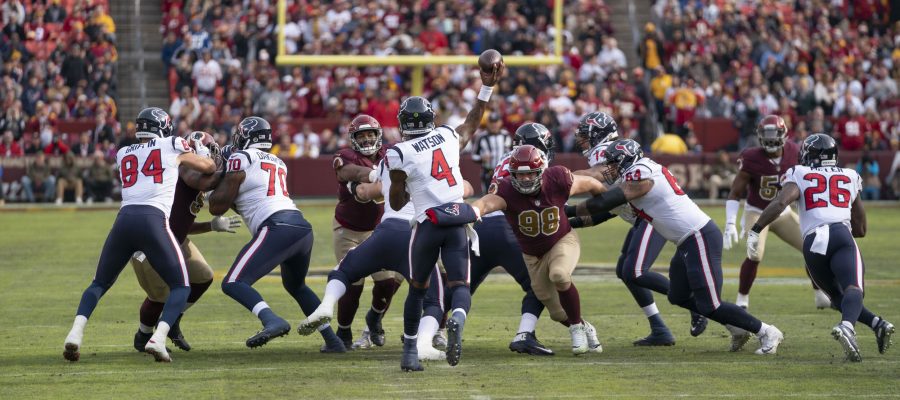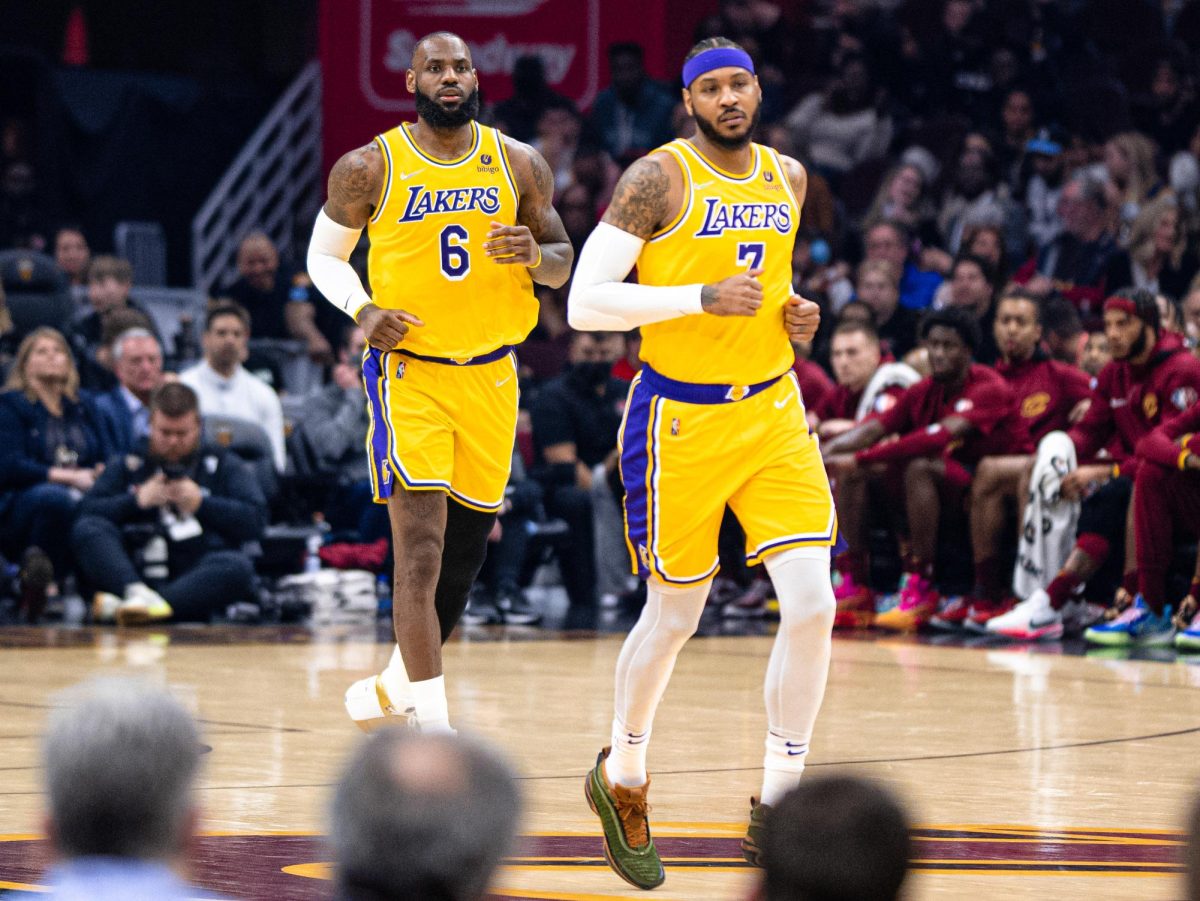The 2019 NFL season, specifically the postseason, has potentially marked the end of an era — an era in which pure-pocket passers reigned over football with an iron grip.
The five-step dropbacks of quarterbacks such as Tom Brady, Drew Brees, Philip Rivers and Peyton Manning struck fear into the hearts of all defensive backs who dared to intervene.
In fact, until Super Bowl LIV, the last time a Super Bowl was played that did not involve Peyton Manning or Tom Brady was back in 2013.
They set records for most touchdowns, passing yards and championship victories.
While all the quarterbacks mentioned will most likely end up with gold jackets in the Pro Football Hall of Fame in Canton, Ohio, the new crop of signal callers can do something that the old guard could not — run.
The new generation of quarterbacks are now dual-threat athletes, endowed with the ability to throw to a receiver 50 yards away on a dime and juke a defender to the point of obliterating ankles.
Led by Patrick Mahomes, Lamar Jackson and Deshaun Watson, dual-threat quarterbacks have taken the NFL world by storm.
However, this passing of the torch has been several years in the making and it all starts at the collegiate level.
For the better part of this millennium, college football coaches have tried to outscore each other at a video game-like pace. One of these college coaches, Urban Meyer, developed the run-pass option offense.
This offense allows for a multitude of plays to be called from the shotgun formation, effectively overwhelming the defense.
Run-pass option, or RPO, gives the quarterback more freedom in the pocket and gives the playcaller the opportunity to run QB draw plays or halfback runs.
Usually, RPOs are run with three receivers and a tight end, with the slot receiver being the most dangerous of the trio of wideouts.
However, a successful RPO quarterback can utilize all his weapons to devastating effect.
Meyer used the RPO to win national championships at Florida and Ohio State, and his offense spread from college to the pro game.
The willingness of the pro coaches to embrace the RPO led to this offensive revolution.
On the defensive side, coaches shifted their base formations to include a “spy” linebacker and an additional defensive back in nickel coverages to combat aerial attacks and surprise runs.
The pro success of RPO started with the Seattle Seahawks and quarterback Russell Wilson, who passed for over 3,000 yards in every season in his career so far en route to two Super Bowl appearances.
His command of the offense comes from his ability to not only lead them to victory, but how willing he has been to get out of the pocket and scramble.
Wilson’s willingness to take a hit forces the defense to respect the fact that plays can be called where the quarterback runs.
Evidence of this can be found in how the Seahawks were second in the league in running plays called while in the shotgun formation.
The versatility Wilson shows is also evident in how he has been responsible for at least 25 touchdowns every season of his career.
If Wilson is the sage, then Mahomes, Jackson and Watson are his disciples.
Mahomes and the Kansas City Chiefs have played a style of offense never seen before in Arrowhead Stadium.
In his two full seasons donning the red and yellow, the defending NFL MVP has accounted for 87 touchdowns and close to 10,000 all-purpose yards.
Last year, head coach Andy Reid placed a tremendous amount of trust in the Texas Tech product, calling the fourth-fewest rushing plays in the NFL.
In addition, the Chiefs called the highest percentage of their plays from the shotgun formation in 2018. Mahomes put the NFL on notice last season; this season, he is playing to win.
The percentage of shotgun formations this year decreased, and the magnitude of his stats has gone down.
However, Mahomes has a freedom in the offense as the commander of the field, most evident in the Chiefs’ 21-point comeback against the Houston Texans in the Divisional Round of the NFL playoffs this year.
Mahomes is fortunate to have some of the best receivers and tight ends in the league.
However, coach Reid and Mahomes’ “Red Revolution” has put Kansas City in a place they have not been in half a century — the Super Bowl.
While Mahomes will play in the Super Bowl, Baltimore Ravens quarterback Lamar Jackson will be at the NFL Honors, likely accepting the NFL MVP award after his remarkable regular season.
What Jackson did this season was nothing short of special.
In his first full season as the starter, he led Baltimore to their best regular season in franchise history with a 14-2 record.
He set the single-season record for the most rushing yards by a quarterback, the single-season franchise record for most passing touchdowns with 36 and led the league in rushing yards per attempt.
Jackson was seemingly a reincarnated version of Michael Vick this season and he looks to establish himself as the premier dual-threat quarterback in the game.
Jackson’s versatility was unleashed thanks in part to head coach John Harbaugh and his willingness to embrace RPO with reckless abandon.
The Ravens ran a whopping 96% of their plays from the shotgun formation and had the highest percentage of rushing plays this season.
Baltimore ran the ball 454 times, with Jackson running the ball 159 times, also an NFL record.
What is truly amazing is that Jackson led the league in Total Quarterback Rating, or QBR, with an 81.7 rating, despite the fact that Baltimore had the fewest passing plays in the NFL.
The freedom of the RPO inspired fear in defenses league-wide, as they must respect Jackson’s ability as a passer as well as his proclivity for running the ball.
Deshaun Watson is another beneficiary of the run-pass option, using his talents in the air and on the ground to consistently bail out his team, the Houston Texans.
Frankly, coaching could be a detriment to Watson’s development as a player.
Although the Texans have won four of the last six AFC South titles, the Houston squad is the only team in the division to not advance to the AFC Championship game.
Just this postseason, Watson could only watch as the Texans squandered a 24-point lead against the Chiefs in the Divisional Round
This was only one week after Watson was the deciding factor in their 16-point comeback victory in overtime against the Buffalo Bills on Wild Card Weekend.
Each playoff performance is even more disheartening than the next, and in order for Watson to elevate his game, the Texans might have to go in a different direction.
This postseason, the old guard was taken down in the Wild Card round.
Brady and the Pats were vanquished, while Brees and the Saints were fed to the gators down in the Bayou.
In the battle of the new gunslingers, Mahomes came out victorious this time.
That is the beauty in the passing of the torch, as with it comes a fight for NFL supremacy again.








